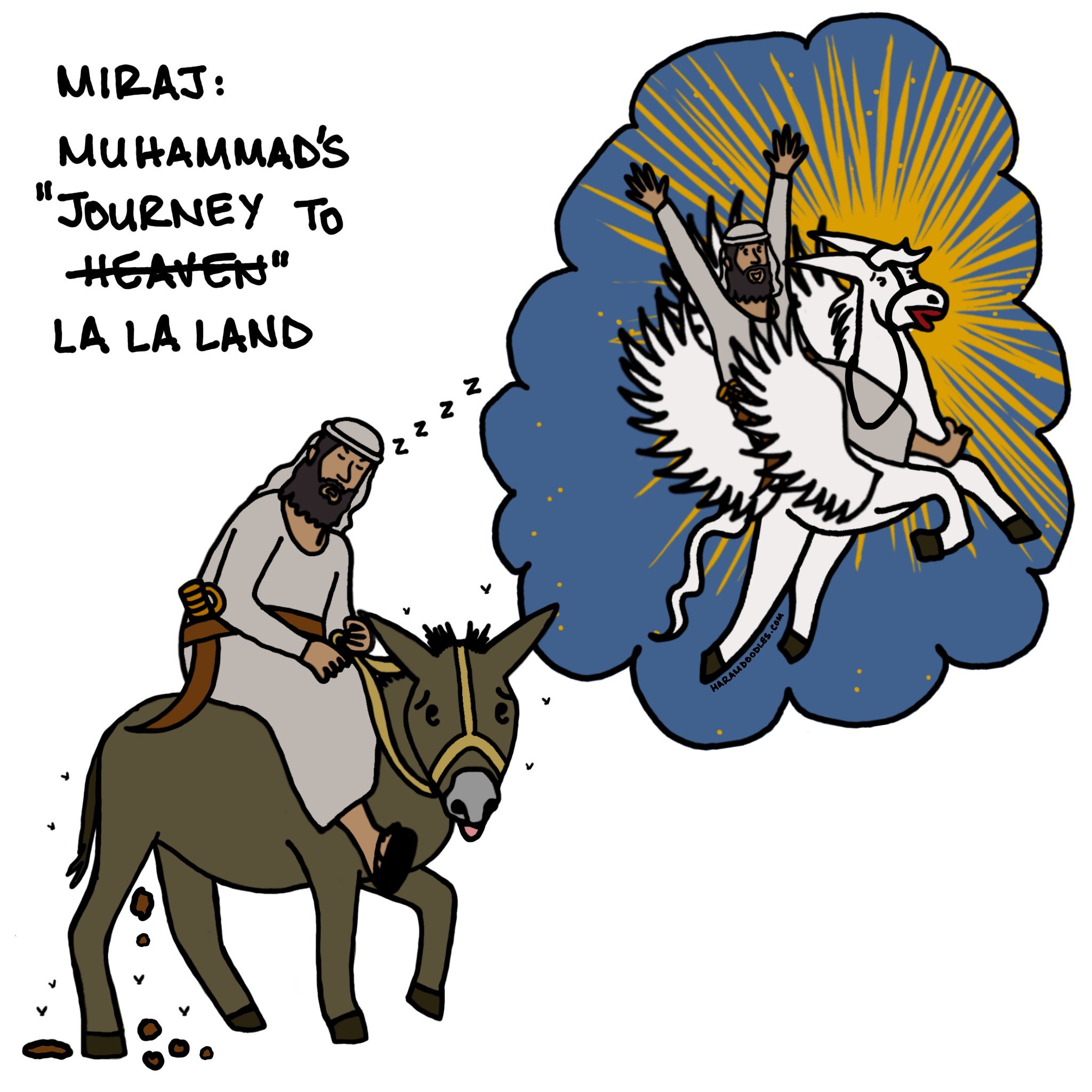Your Weekly Dispatch Has Arrived
Welcome back! This week’s Unbelief Brief takes us to the unusual suspects of Sweden, Quebec, and New York. We share our thoughts about Miraj in EXMNA Insights and share a recent case from Pakistan in The Persecution Tracker.
The Unbelief Brief

In Sweden, Salwan Momika, one of the defendants in a case of “agitation against an ethnic group,” has been murdered. The case was brought against him after he burned a Qur’an in front of Stockholm’s Central Mosque in 2023. His murder took place “in an apartment” on Wednesday, and he had reportedly been livestreaming “near the time” of his death. Momika, an Iraqi who came to Sweden in 2018, stated his belief in 2023 saying Islam’s holy book “should be banned in the world because of the danger it causes to democracy, ethics, human values, human rights, and women’s rights.” While the murder is still very recent and no official motive has been established, the Prime Minister of Sweden suggested it “might be linked to a foreign power.” The crime was likely motivated by his anti-Islam activism and Qur’an-burning—something he had been given explicit permission to engage in by Swedish authorities on the grounds of free speech. Momika’s murder is a stark reminder of the constant threat of violence that hangs over the heads of so-called “blasphemers,” even in nominally free countries.
Back in North America: the Supreme Court of Canada has agreed to hear a challenge to the province of Quebec’s law prohibiting certain public workers from wearing religious symbols on the job. Quebec, which has a strong tradition of secularism, has vowed to defend the law “until the end.” While the law applies to all workers, critics argue it “disproportionately” affects Muslim women who choose to wear the hijab. It will be interesting to see how the case turns out, and whether, if the challenge succeeds, it will serve as a springboard for more extensive attacks on the principle of secularism.
Speaking of hijab: Friday is “World Hijab Day,” the 13th since its “founding” in 2013, and the state of New York has seen fit to honor and recognize this in law—something the Council on American-Islamic Relations (CAIR) has welcomed and lauded. Its purpose is to “invite non-Muslim women and Muslim women who don’t normally wear the hijab to ‘step in to the shoes of a hijabi for one day.’” While there is nothing wrong with cultural awareness, or with allowing private citizens to wear what they like, these values are not shared in places where wearing the hijab is mandated and enforced along with other provisions of modesty culture. EXMNA has long pointed out the irony of reframing a tool of women’s oppression as a symbol of feminism and free choice, and the fact remains that a significant proportion of women in the Islamic world do not have the luxury of choice that Muslim women in the West enjoy.
EXMNA Insights
The Miraj, Muhammad’s alleged night journey, is one of the most extraordinary claims in Islamic tradition—yet, when examined skeptically, it appears… ludicrous. The idea that Muhammad traveled from Mecca to Jerusalem and then ascended through the heavens in a single night on a winged creature called Buraq stretches the bounds of reason. If believers accept Buraq as real, why dismiss other mythical creatures like leprechauns or the Tooth Fairy? Both exist in folklore, yet only one is treated as a religious truth.
The journey itself defies logic and science. Muhammad supposedly traveled not just vast earthly distances in an instant but also ascended through layers of the cosmos to meet past prophets and, ultimately, Allah. The physical impossibility of surviving such a journey—let alone breathing in the vacuum of space—raises serious doubts. One could argue he was supported by God’s 'magic' to break the laws of physics, though that would make the purpose of the Buraq somewhat redundant. Moreover, the concept of layered heavens reflects ancient cosmology, which has long been debunked.
Even within the framework of religious belief, the Miraj raises theological contradictions. If Muhammad was physically transported, where was his body observed missing in Mecca? If it was a vision, why demand literal belief in an episode indistinguishable from dreams or hallucinations? The event ultimately rests on faith alone, yet its acceptance while rejecting equally improbable myths exposes a clear double standard. Rather than being evidence of divine power, the Miraj highlights how religious claims rely on unquestioning belief rather than reason or evidence.
Enjoy this collab between EXMNA and @haramdoodles in honor of Miraj. And while you’re at it, give her a follow on Instagram!

Persecution Tracker Updates
In Pakistan, four individuals were recently sentenced to death on blasphemy charges. Read more about it here.
Until next week,
The Team at Ex-Muslims of North America
P.S. We’d love to hear from you! Share your feedback at [email protected].


